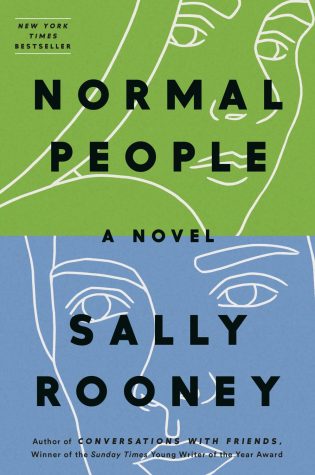#EatClean article’s image promotes #ProAna
 The article “Dieters form online community,” published in last week’s Pioneer, was a positive, technology savvy look at the impact of social media on dieting culture. Unfortunately, it failed to investigate the dark side of this new digital culture or question the relationship between dieting, weight loss, and the obesity epidemic.
The article “Dieters form online community,” published in last week’s Pioneer, was a positive, technology savvy look at the impact of social media on dieting culture. Unfortunately, it failed to investigate the dark side of this new digital culture or question the relationship between dieting, weight loss, and the obesity epidemic.
Social media like Instagram, Tumblr, Pinterest and Twitter are flooded with images and slogans that inspire people to eat healthy, exercise, and lose weight. It is a sad irony that these online movements were sparked by “pro-ana,” or pro-anorexia, online support groups.
Beginning in the early 2000’s, members of these communities began to meet in secretive groups to inspire each other to starve and purge in pursuit of a skeletal ideal, according to a study by Leslie Regan Shade, an associate professor at the University of Toronto.
Shade’s study focuses on the young women who use these websites. She finds that these pro-ana websites lead to its users developing more body dimorphic attitudes.
In her report, she cites Holly Hoff, director of programs at the U.S. National Eating Disorders Association. Hoff said on the Oprah Winfrey show the pressure to be thin is “…so pervasive, the pro-ana sites [are] like placing a loaded gun in the hands of someone who is feeling suicidal.”
These communities were often secret because many members were minors. Once research had shown that these communities cause real harm, many Internet companies banned explicitly pro-ana content.
Because of this, the names of pages and sites involved are always changing. Thinspiration, or “thinspo” is a current name for this content, its pages filled with pictures and slogans that glorify emaciated bodies. Mary Humbert, who was interviewed in last week’s Pioneer, raved about Thinspiration as a source of diet advice.
“Fitspo” communities created to promote healthy eating and exercise began as a reaction to the sickening brutality of thinspo. Despite this, as socially networked fitness has become mainstream, the same images and posters that populated thinspo pop up everywhere, uncontrollably, like mushrooms after rain.
The Pioneer’s illustration of its front page story on #EatClean, another social media fitness movement, is an example of a blurred line between fitness and disease. It is a collage with two slogans and two pictures that could have been lifted from pro-ana Thinspiration.
One picture even features a “thigh gap.” This gap is exactly what it sounds like, a gap between the thighs when standing with the feet together. It has become a crowning achievement in the thinspo set, and is not physically possible for most women. Attempting to achieve it can lead to malnutrition, especially in young girls whose bones are still developing.
Overlap between messages of health and deadly obsession is inevitable because both fitness and starvation enthusiasts are devoted to the cult of self-control.
We don’t treat obesity like a complicated medical and nutritional challenge in America. We pretend it is a simple moral math problem: eat less, exercise more, and lose weight. We’re trained instead to see obesity as a failure of individual will, the connection between willpower and weight loss has been woven into the American myth of self-creation.
As the American epidemic of obesity has increased over the last twenty years, we’ve tried to find fault. The explanations were varied, but all began by assuming that Americans had started acting differently. Either eating more, or exercising less.
In multiple surveys, doctors identified their obese patients as lazy, lacking self-control, willpower, and compensating for emotional problems. Failure to treat obesity and the refusal to treat other conditions before obesity is controlled combine with these attitudes to convince many obese people to stay away from the doctor entirely, which exacerbates our health crisis.
By pretending that obesity is a personal choice, doctors justify their collective failure to treat a difficult and deadly disease, and their often surprisingly frank dislike of their patients. This position seems a lot harder to defend when you learn that a large section of the animal kingdom has been getting fatter along with us.
In 2010, Yann C. Klimentidis and a team of scientists found that this obesity epidemic was shared by domestic and feral mammals. Most surprising, lab animals had also gained weight over the decades. Although many factors could influence the weight of wild and domestic animals, the lab animals’ diets had stayed the same, so they couldn’t have gained weight by eating more.
However our fattening managed to affect the animals around us, it seems unlikely to be failing willpower. Lap band surgery is an interesting contrast because it seems like artificial willpower.
I say “seems” because no one knows how it works. Its success is a mystery beyond the calorie restriction enforced by the lap band, not a result of the simple, intuitive equation smaller stomach: less food.
Alice P. Liou and her colleagues discovered one possible, partial reason that it works. They performed gastric bypass surgery on mice at the Massachusetts General Hospital in Boston. They later transplanted bacteria from the guts of the surgically altered into otherwise healthy obese mice. Those obese mice promptly lost weight.
Professionals agree that heredity plays a role in weight gain, but the popular culture tends to hear “your genetics play a role and your environment plays a role” as “fat people raise fat people.”
Masato Asai of Harvard Medical School and his colleagues found a concrete example of heritability. They knocked the Mrap2 gene out of some mice, which then grew obese on the same diet as normal mice.
This violates physics, specifically the first law of thermodynamics. Curious, Asai then measured their movement, body heat, and breath around the clock, looking for the missing energy. He incinerated their feces, hoping to show that the obese mice were digesting their food more completely.
These experiments were all dead ends. The mice are still a mystery, thermodynamics still stands violated. Mrap2 has limited applicability in humans, but it proves something: a calorie is not a calorie.
Here’s a surprise for the hard bodies: this whole column was for you! Think about your explanations for your lean body and compare them to what we’ve learned: your willpower is the same as a rat. The bugs in your gut diet for you. You were born skinny.
I’m not saying that you didn’t work hard. And I’m not saying you don’t deserve whatever athletic or ascetic or health goals you’ve achieved. Kudos.
You worked hard, and you deserve your reward—but there are others who worked just as hard, or harder, for just as long, or longer, and got no reward at all, for any of the reasons I just gave you, or all of them, or something else entirely. Your success was not just due to your effort, but also to factors we are only beginning to understand.
Lionizing willpower sanctifies our national obsession with weight and justifies our contempt for the obese. Our collective conviction turns on the “fact” that obesity is a moral issue of willpower, discipline, and self-control.
If we could let that “fact” go, as scientists already have, we might be happier as we are, and healthier.














